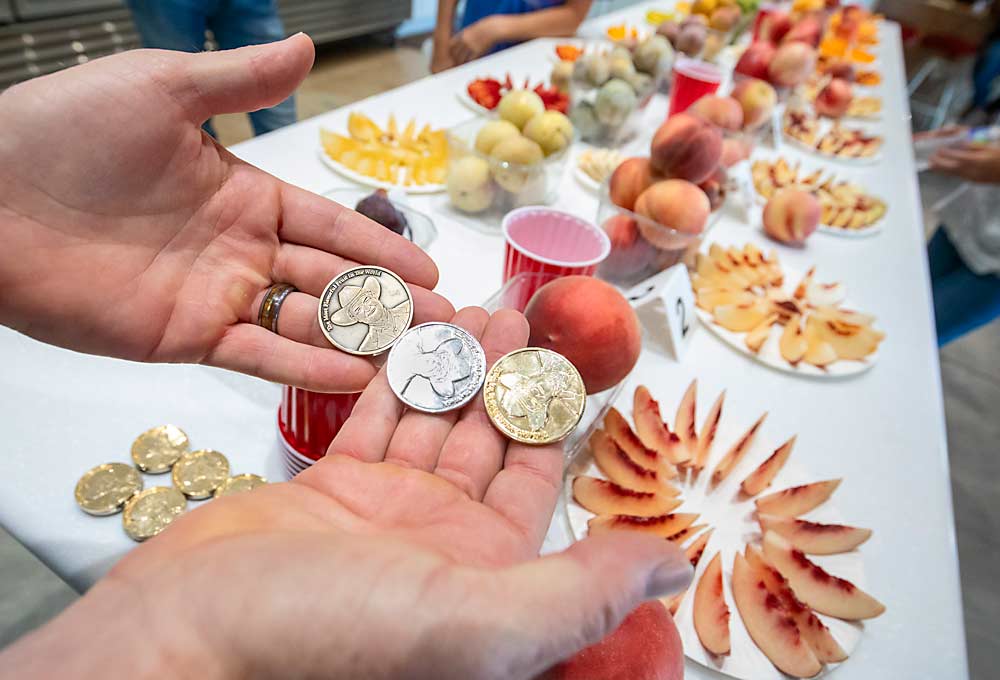
Imagine a wine tasting, but way more colorful.
On an early August day, 20 varieties of apriums, peaches, pluots and nectarines sat in neat rows, symmetrically sliced and fanned out in circles of purple, pink and orange across a white countertop inside the research and development office of Family Tree Farms of Reedley, California.
The company’s research director, Eric Wuhl, stages weekly fruit tastings from April through November as a way for the owners of the three-generation company to keep abreast of new — and old — varieties. Sometimes buyers visit, but usually, it’s just for “the family.”
Family Tree Farms, a vertically integrated stone fruit producer in the Central Valley near Fresno, works with 28 breeders around the globe and keeps trials of 1,000 or so varieties in its research orchard just outside the tasting room doors.
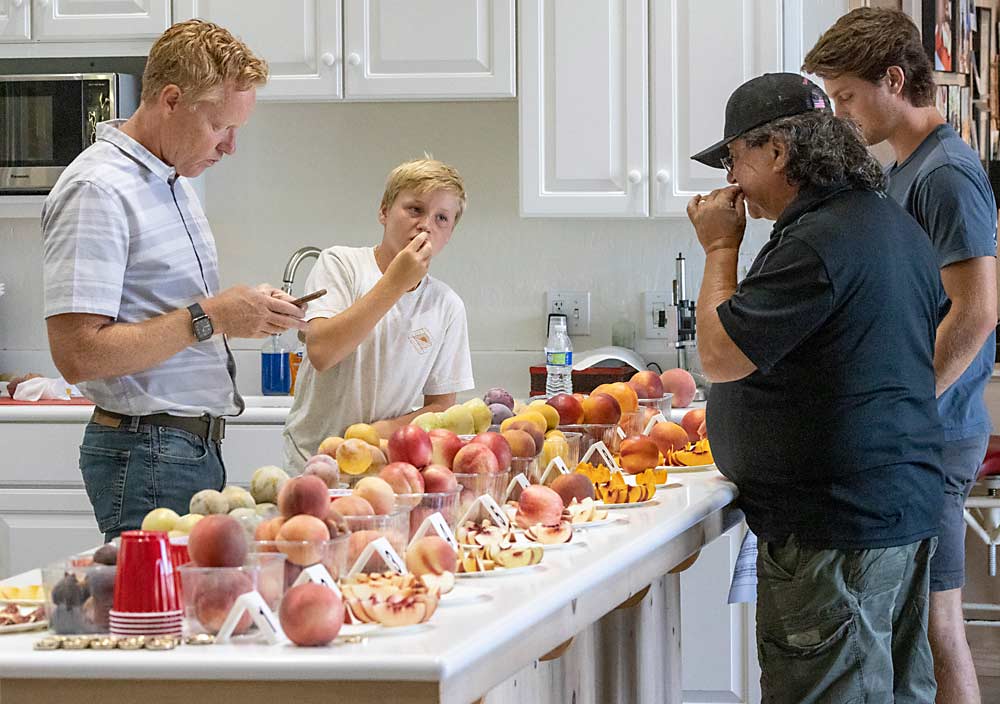
The family members — teenagers and grandparents alike — worked their way around the table with a scorecard — usually on a tablet or phone — grading each sample on a scale of 1 to 9 by flavor, firmness, visual attractiveness, market timing and “Would you purchase again?” Each fruit, indexed by variety, type, location, harvest date and Brix, had room for comments.
Also, next to their three favorites, the tasters placed gold, silver and bronze coins adorned with the head of family patriarch David Jackson. They sometimes call it the “Olympic table.”
The family members prioritize the attributes they want, said Andy Muxlow, one of the family farm’s primary owners.
“The first priority is always flavor,” he said. After that, he ranks yield, size, quality and appearance in order of importance.
However, tastings also sometimes lead to logistical discussions, such as how a fruit will fit into the operations of the growing season.
“I’m telling you, the packing shed cannot handle that right now,” said Ty Muxlow, Andy’s son and one of the family’s farm managers, speaking to an uncle. He was concerned that a nectarine with favorable scores might further clutter an already crowded harvest window.
The family never runs out of samples to taste because Wuhl repeats varieties, testing them at different times of harvest, length in storage and stages of tree maturity. A fruit that scored high one time might get low scores another. The data helps them spot trends or inconsistencies over time.
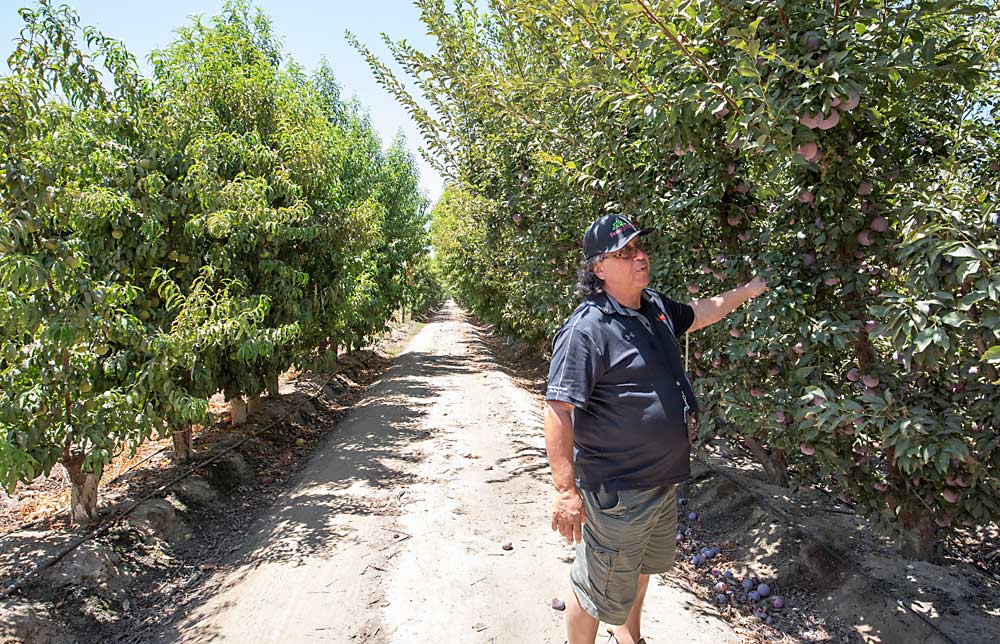
Other companies hold fruit tastings, too, though few would work with as many breeders, said Andy Muxlow. The company prides itself on looking far and wide for fruit that tastes good.
“Genetics is how to do that,” he said.
Variety development is a long game. The company created the research center in 2007. It’s a six- to 10-year process to vet a variety, Andy Muxlow said. Then, it takes another 12 to 14 years to match the right variety and rootstock combination and replicate trials on a commercial scale. By then, a variety could fall in and out of favor with consumers.
A wide array of varieties is one of stone fruit’s calling cards. “Having a diverse portfolio of varieties is normal,” said Ian LeMay, president of the California Fresh Fruit Association.
Most varietal innovations come from private nurseries, either in the U.S. or globally. The University of California has breeding and evaluation programs, but commercial producers such as Family Tree Farms will always want to search on their own, to speed up the pace and broaden their options, if they can afford to, LeMay said.
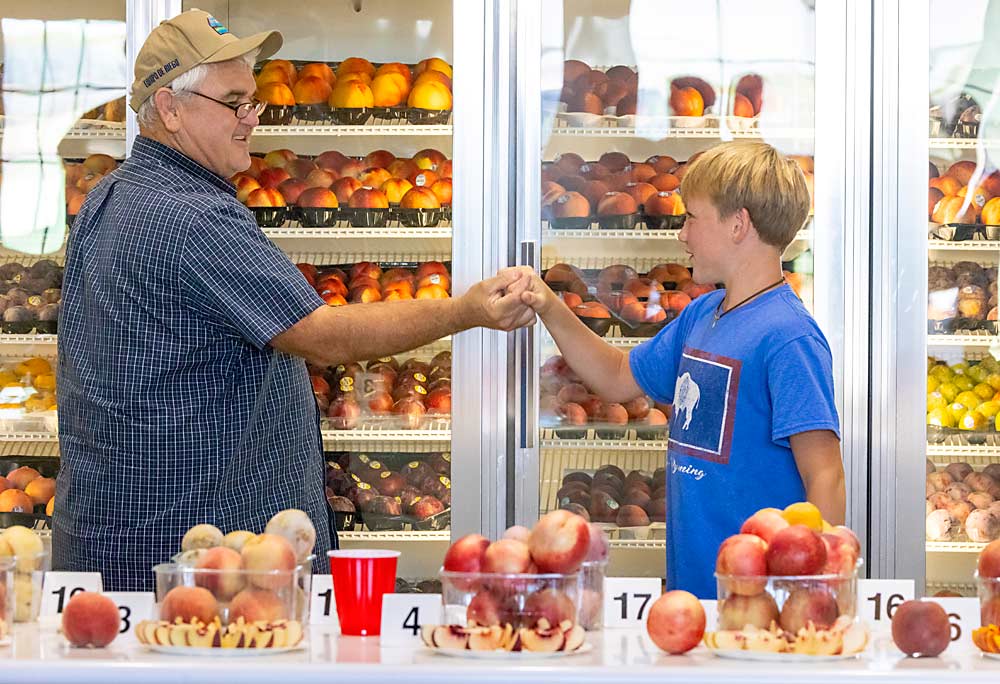
LeMay has attended some of Family Tree’s tastings and liked the flavors, sure. But he also enjoyed listening to the company leaders discuss how flavor and texture preferences change over demographics and markets. For example, some Asian consumers consider bloom — the white, natural, linty protectant on plumcot skin — a desirable indicator of freshness.
“That’s what’s so fun to hear them talk about,” LeMay said. •
—by Ross Courtney

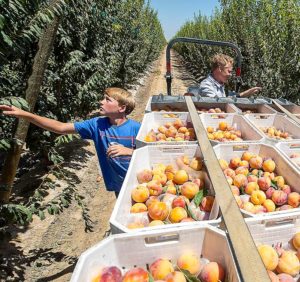





Great story, well told, Ross. I love stories like this, both as a longtime industry communications professional and as a discerning consumer of fresh produce. To the marketer me, being “flavor-focused” and being “consumer-centric” have to be the same thing. Our customers want flavor first, everything else including price is secondary. Meanwhile, the consumer me appreciates Family Tree Farms’ effort, because it shows in the products that make it to my local grocery stores in New Orleans. I’ve learned to trust anything that wears the Family Tree Farms brand. Sure, our industry has to get the other “details” right after flavor, but to have any chance of succeeding in the marketplace, we have to start there.